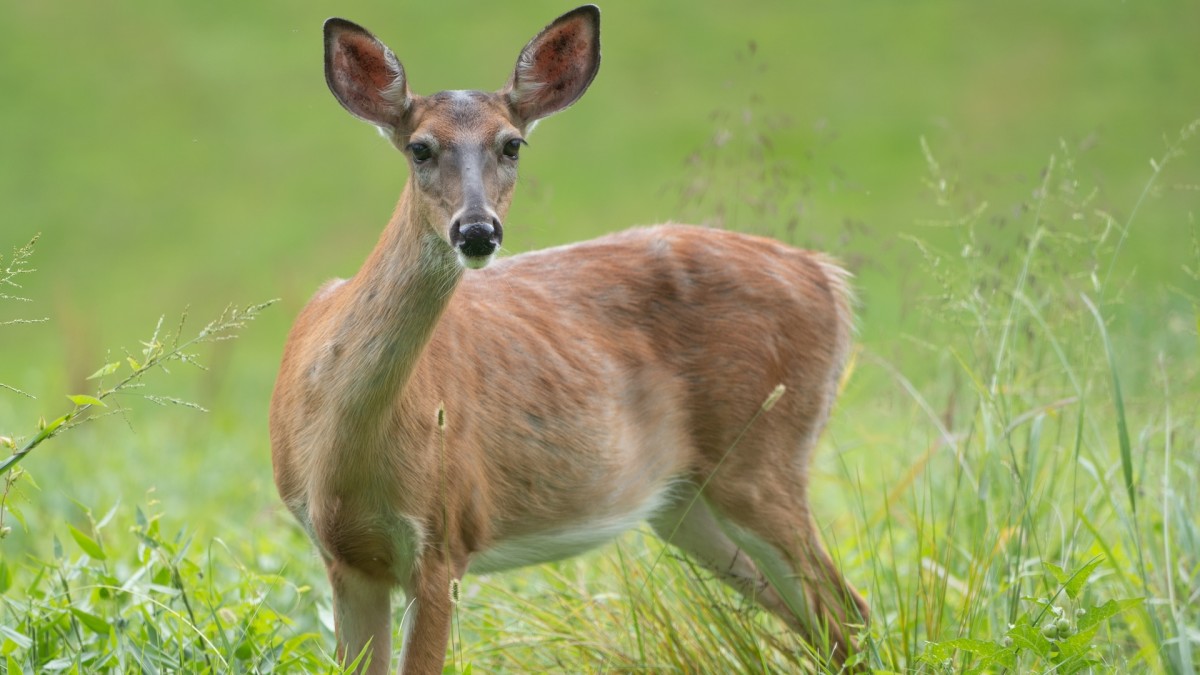
A short article has been making the rounds on the news and social media claiming a possible link between eating CWD-infected meat and two men who died of Cruetzfeldt-Jakobs disease (CJD).
It’s unclear, however, whether this potential link should worry hunters or if CWD was responsible at all.
First, some background.
Chronic Wasting Disease, the cervid cousin of scrapie and mad cow disease, has been getting a pulp treatment in the press as of late, sometimes being referred to as “zombie deer disease.” While it doesn’t quite live up to that name, CWD is still something to be concerned about.
Part of a family of diseases known as transmissible spongiform encephalopathies, or TSEs, CWD is believed to be caused by a misfolded or misshaped protein called a prion, which enters the body and binds to healthy proteins, and in turn causes them to deform. These deformed clusters then lead to brain damage by essentially creating small holes in the brain, giving it a spongelike appearance, thus the term “spongiform.” TSE prions concentrate in the brain and spinal column and can be transmitted through direct contact from bodily fluids, or they can persist environmentally in water, soil, or food.
TSE diseases affect a number of different mammals: scrapie in sheep, “mad cow” or bovine spongiform encephalopathy (BSE) in cattle, CWD in cervids like deer and elk, and CJD in humans. Prion diseases present similarly across species, but aren’t known to jump from one species to another. Deer don’t get scrapie, sheep don’t get BSE, and humans don’t get CWD. Or at least a link has yet to be proven.
On April 9, The American Academy of Neurology published a study authored by faculty at The University of Texas San Antonio on the online version of their journal, suggesting there may have been a connection between two hunters who died from CJD in 2022 and their consumption of CWD-infected meat. The study states that two hunters both died within a fairly short time of each other and that both men were friends who hunted and consumed deer from the same population, which was known to have been affected by CWD.
The study states that one of the men had a history of consuming CWD-positive meat, though it offers no further details. It doesn’t confirm whether the other ate CWD-positive meat, only that he ate deer from the same population.
According to the study, “The patient’s history, including a similar case in his social group, suggests a possible novel animal-to-human transmission of CWD. Based on non-human primate and mouse models, cross-species transmission of CJD is plausible.” The authors did not provide any information on who the hunters were, only that one was 72 years old at the time of his death.
“I’m suspicious,” biologist Jim Heffelfinger told MeatEater. “It’s simply a mention of this incident happening. That’s where the research is supposed to start.”
The authors did not provide important context, such as where the case happened, what the background rates of CJD are in that area and if those background rates have seen any fluctuation or growth in correlation to the spread of CWD. “To do a real study like this, you have to have that information,” Heffelfinger said.
While the study itself does not make any direct claims of causation, only suggesting a possible novel animal-to-human transmission, several resulting news articles do boldly make that jump. The Daily Mail, for instance, published a particularly inflammatory headline stating that “Two hunters become first Americans to die from ‘ZOMBIE DEER DISEASE’ after eating infected venison.”
While it is true that these hunters did eat venison, and they did die, and CJD was the cause of death in both hunters, the connection remains unproven. In the study, the authors cite the difficulty of distinguishing the CWD prions from CJD prions “without detailed prion protein characterization” and that it is simply “not possible to definitively rule out CWD in these cases.” It goes on to state “the need for further investigation into the potential risks of consuming CWD-infected deer and its implications for public health.”
But Heffelfinger finds even that hard to believe. “With a western blot test, you can tell the difference between scrapie, CWD, or BSE, I have a hard time believing CJD wouldn’t show up on that test,” he said.
The risk of CWD passing on to humans has been studied for years, but “despite a whole bunch of looking, no one has been able to find a connection,” Heffelfinger said.
CJD cluster cases do pop up from time to time, and they occasionally overlap areas where CWD is known to occur. But no study has ever shown an increase in the prevalence of CJD in areas known to have CWD-afflicted deer herds, even in areas like Colorado, where the disease has existed in wild deer populations since at least 1981, or in Wisconsin, where rates of infection creep towards 30% in some deer herds.
Over the last several decades, tens of thousands of infected deer have been knowingly or unknowingly consumed, and not a single case of CWD in humans has been found. That’s not to say deer-to-human transmission is impossible; the absence of evidence isn’t the evidence of absence, after all.
Cases like this do highlight the importance of continuing to study these diseases. TSE diseases are always fatal, and as of now, the CDC recommends not eating deer that have tested positive for CWD. For more information on hunting and best practices for reducing the risk of CWD transmission, contact your local wildlife agency.




